Posts filed under 'Steve Jobs history'
Another John Carmack anecdote from ex-Apple Jim Black
Select excerpt from a detailed and lively anecdote posted on Facebook by Jim Black, retailing a visit of John Carmack to Apple’s offices to discuss graphics in Mac OS X (I presume this took place in 2001):
What happened next was one of the most impressive things I’ve ever witnessed about Steve or any Silicon Valley exec. Early on in the discussion, the Apple engineer realized that “graphics engineer” in the room was John Carmack. And he realized that he was going to need to defend his technical decision, on the merits, in front of Steve. After extended back and forth, the Apple engineer said, “John, what you’re arguing for is the ideal …”
He never made it to the next word because Steve suddenly stood bolt upright, slamming both palms onto the desk and shouting, “NO!!!!”
“NO!!! What John is saying is NOT the ideal. What John is saying is what we have to do!!! Why are we doing this? Why are we going to all this trouble to build this ship when you’re putting a TORPEDO IN ITS HULL?!!!!”
All of this was said with the utmost conviction and at extremely high volume. To his credit, John, seated directly next to a yelling Steve Jobs, didn’t even flinch. What was so impressive to me in that meeting was not the drama so much as it was that Steve Jobs made a decision on the merits to side with John on a technical issue rather than his longstanding and trusted graphics engineer.
Read the full story below:
https://www.facebook.com/JamesHBlack/posts/10156560054277932
How expensive the NeXT computers actually were?
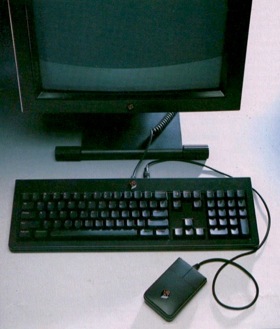
While I was busy doing research for the re-writing of my Long Biography of Steve Jobs, I came across an old link I had bookmarked some years ago: Éric Lévenez’s website. Lévenez is a fellow countryman of mine, who has a long history with UNIX and NeXTSTEP, as you can tell from his webpage. (I can’t say I share his aesthetic inclinations though). He has in his NeXT archives a couple copies of articles written in the early 1990s about the NeXT systems, in the French press. If you are interested in reading them, they are available on this nice dedicated page (look for “SVM” in the Magazines window).
The first article is from July 1989 and introduces the NeXT Cube and its operating system to the French, who still couldn’t buy the computers back then. The article has a very optimistic tone and doesn’t fail to recognize the technical superiority of NeXTSTEP. The tagline proclaims “Why it won’t be possible to design, develop on and use a computer the old ways after NeXT”.
Lost among the technical specs is an interesting table comparing the prices at which the company sold its four computers in the US:
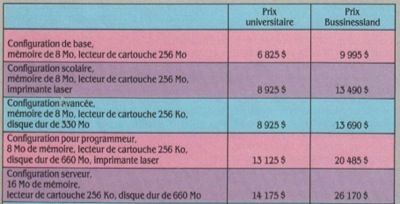
The five rows represent the five configurations of the NeXT systems that could be bought. The two columns represent the University price and the Businessland (NeXT’s retail partner) price —which as you can see cost 50% more. The configs were:
- Standard: 8MB of RAM and a 256MB optical drive
- Academic: standard + laser printer
- Advanced: standard + 330MB hard disk
- Developer: academic + 660MB hard disk
- Server: 16MB of RAM, optical drive and 660MB hard disk

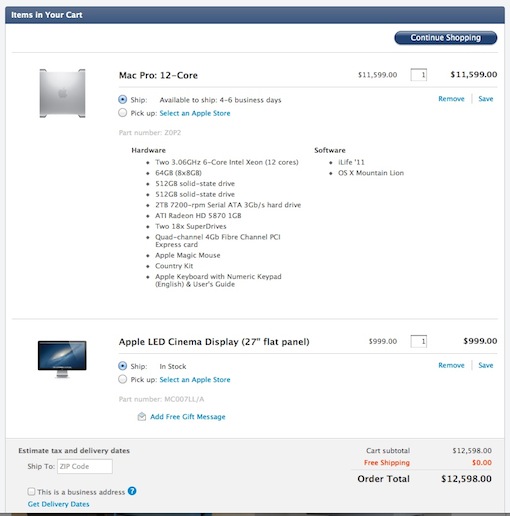
- the Macintosh SE/30, introduced in January 1989 for $6,500, came with a 16 MHz Motorola 68030 and 1MB of RAM built in
- the Macintosh IIcx, March 1989, $5,369, 16 MHz Motorola 68030, 1MB RAM
- the closest to the NeXT Cube is the Macintosh IIci, launched in September 1989 (one year after the NeXT Computer) for $6,269 with the same processor, the Motorola 68030 running at 25 MHz, and 1MB RAM in the default config
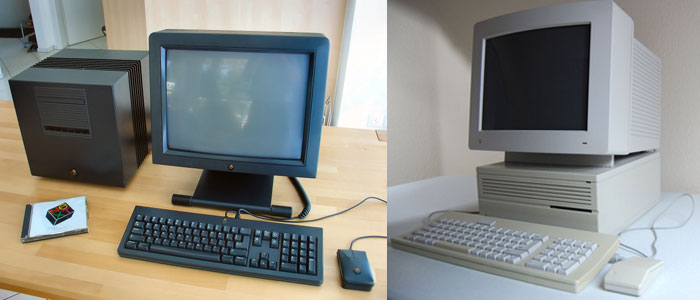
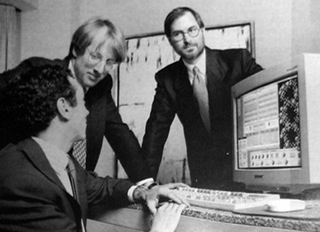
Steve Jobs selling OpenStep on Intel machines at Morgan Stanley, 1994
If you’ve read this far, you probably are as hard-core a fan of Black Hardware as your fellow webmaster. Perhaps you remember that I mentioned a second article on Lévenez’s website. What was it about, you might ask? Well, it was a great relief for me, who sometimes wishes I could have lived during the NeXT days. Indeed, the second article was about the arrival of NeXT to the French market. The Cube was priced… 130,000 Francs of 1990 i.e. 18,000 USD of 1990 —almost twice the US price, and over $32,000 of 2012… Surprise, surprise, I don’t think I could have afforded them anyway!
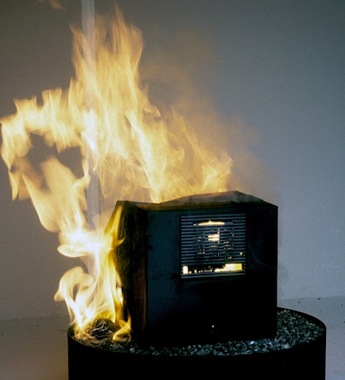
A few Steve Jobs videos worth watching
I’ve been tweeting instead of blogging for the past three months and it’s time for this to end. Let me start with a number of videos you may or may not have seen featuring Steve Jobs.
Macworld 1997
The first of these videos is the keynote of Macworld 1997. Now remember, Steve Jobs came back to Apple in December 1996 as an “informal advisor” to the then-CEO Gil Amelio. He only became CEO in July of that year, after the disappointing results of Q2’97 were revealed — a loss of over $50 million — and Amelio’s failure became evident. Macworld, which took place in January 1997, was Steve Jobs’s first public appearance in his new role, back at Apple after the purchase of NeXT. His speech is short, but it’s focused and makes it clear that he has a vision for the company.
However, the rest of the show is very enlightening as a picture of how bad a state Apple was in back in 1997. Amelio is the anti-Steve Jobs: absolutely no charisma, complete and utter lack of professionalism, and of course zero vision. The “big reveal” at the end where the 20th Anniversary Macintosh (designed by Jony Ive who was already a designer at Apple, it is a misconception that Steve Jobs hired him) is unveiled, is so pathetic it’s not funny. Such amateurism is not imaginable in the Apple 2.0 era under Steve Jobs.
At the end of the keynote, Amelio tried to do a PR trick by having Steve Wozniak show up. He wanted Woz and Jobs to pose with him to symbolize the regained trust in Apple. Unwilling to show support to Amelio, Jobs stayed away from him and Woz, so the photo opportunity was lost. Amelio complained about it in his autobiography On The Firing Line.
Here is an embedded version of the video. I also put it on the website, in the keynote section:
If your time is limited, I suggest you watch Steve Jobs’s speech @7:00 and the failed introduction of the 20th Anniversary Mac, which quickly follows Woz’s onstage appearance @38:50 (the moment when Amelio tries to get them together for a picture is around 43:30).
Steve Jobs in Sweden in 1985
A rarer video that you may have missed is one of Steve Jobs in 1985, flying to Sweden for a speech at Lund University:
The video starts by his arrival by helicopter, in then-traditional blue jeans and white shirt. After a strange performance by singers, Steve Jobs starts his (perhaps unprepared) speech by a joke about them, then goes on to talk about his vision of the computer as “a new medium” delivering not text nor movies but software. He goes on to say that in the future, computers should be able to completely absorb the mind of “the next Aristotle” so that you could ask him a question, using a computer — something books do not allow. Jobs ends his speech by talking about the tough economic period the PC industry was going through back then, and says it is only a delay of the inevitable revolution brought about by PCs. His good joke to illustrate his point is “I’m sure Henry Ford had a few bad quarters back in the 1920s”.
Jobs then says the next step in his trip is to go to the Soviet Union to try and sell them Macintoshes. This is an indication that the video was shot only weeks before his departure from Apple. If you watch the video entirely, you will see the university dean making a joke about Steve’s arrival by helicopter, then explaining why computers are great tools for the mind (a metaphor Steve Jobs was certainly familiar with).
The Mac 1944 Promo video
This video was talked about a lot in the news lately. It is an “in-house” commercial (because it was never aired) from the Mac team making a parallel between 1944 and 1984. Just like the US Army liberated Europe in 1944, the Macintosh would free the desktop workers from the tyranny of the IBM PC. Steve Jobs plays the part of FDR, in a rather unimpressive performance.
The video wasn’t news to me. I had seen clips from it before, and the Steve Jobs clip was partially shown in his 30th birthday video which was made public after his passing. I believe that many news sites have noticed that mentioning Steve Jobs increased their pageviews, and took every possible occasion to do it. The only interesting (and new) thing that this news coverage has brought is an article by Michael Markman, the advertiser behind the video. He explains how the original idea was to use Charlie Chaplin’s character of Adenoid Hynkel (in The Great Director) as a metaphor for both Hitler and IBM, since Big Blue used Chaplin in its PC commercials. The money quote is
Glenn, Mike, and I marched into Steve’s office to give him the pitch. Pretty much the way I outlined it in the previous paragraph. Steve’s eyes were sparkling through it all. By the time I got to, “and you as FDR,” I had made the sale. In the binary universe of Steve Jobs, something is either a zero or a one. This was a one.
The All Things D videos
Finally, in the wake of this year’s All Things Digital conference, The Wall Street Journal has released HQ videos of all of Steve Jobs’s appearances at the yearly tech gathering as downloads on iTunes.
These videos aren’t new — in fact, they have been on this site for months. However they are revealing of what impact Steve Jobs had on this conference, and how profoundly his absence can be felt now. In fact, this is exactly the topic of Steven Levy’s great article on Wired: All Things D Is Haunted by the Man Who Isn’t Here. Levy, one of the conference’s privileged attendees, describes how the the ghost of Steve is haunting it this year. I love his ending anecdote told by Larry Ellison:
My favorite story is Ellison’s, about how he accompanied Jobs frequently to the prototype Apple store in a nearby warehouse, set up so Jobs and his team could constantly tweak the experience to approach perfection. Ellison noted how contrarian the effort seemed. “Don’t you read the newspaper?” he would ask Jobs. “They’re saying bricks and mortar are dead.”
“We’re not using mortar,” Jobs replied. “We’re using glass and steel.”
Steve’s mark on All Things D, the only context in which he would openly discuss his views on the industry publicly, is no coincidence. It is a reflection of Steve’s “special relationship” with Walt Mossberg, dating back to the late 1990s. Mossberg was an early supporter of Steve’s comeback at Apple and his efforts such as the original iMac. That relationship is discussed in the Walter Isaacson bio, and it has since been confirmed by Mossberg himself, who wrote a touching piece on his favorite shared moments with iLeader. As for me, I cannot help but think of this post by Fake Steve Jobs back in the days when Dan Lyons was funny and anonymous. His jealousy for Mossberg can be felt in his narrative, but the piece is so funny that it is excusable.
Steve Jobs passed away today
I just woke up to the news of Steve Jobs’ death. I live in France and the news became public while I was sleeping.
The irony is that one of the last things I said before going to bed was to my girlfriend, with whom I shared my concern of the total absence of any reference to Steve during Apple’s latest event. I talked to her about Scoble’s post on Google+:
I’m hearing that Steve Jobs won’t be at tomorrow’s press event. He’s just not feeling well enough to come out in public, I hear (and yes, that makes me sad, the industry will really miss him and they will see again tomorrow why). I keep wishing that these continued rumors are wrong, but know in my head that they probably are right.
and said, “you know, maybe he’s at the hospital or something. One day we might hear he’s dead just like that, out of the blue”. Of course I never expected that day would be today, the day following the event.
It really is Steve-ian to have stayed CEO until the last possible moment. Of course the words of Steve’s resignation keep coming back into my head.
I have always said if there ever came a day when I could no longer meet my duties and expectations as Apple’s CEO, I would be the first to let you know. Unfortunately, that day has come.
But like many others I wouldn’t believe they meant his health condition had been decreasing. I thought he wanted some rest for the last years, if not months, of his life. I thought he would be there around the time his biography came out. I thought he would take time to have his house finally built. But no. Like so many geniuses and heroes before him, he fought until the last moment, and Death has come to him sooner than it should.
Of course I am still overwhelmed by the news and all the testimonials that are pouring out everywhere. I will take some time to reflect and think about what this news for Apple, even for me. As far as the website is concerned, I was working on the next version that would come out in 2-3 weeks. With today’s news I will transform the project into an online tribute to our greatest hero, the man who has changed the world several times over, one of the greatest innovators and entrepreneurs in history: our Steve.
Gems from the noise following Steve Jobs’ resignation
I’ve been working on this post for a while but I have been overwhelmed by a number of things recently so sorry about the delay.
I’ve always thought that the only positive thing that would result from Steve Jobs’ withdrawal from the public spotlight would be the flurry of stories to pour out from all corners of the Wold Wide Web. His recent resignation proved me right. To save you time and effort, here is my personal selection among the several dozens of articles and stories I have read in the past three weeks. If you think a worthy one is missing, do not hesitate to mention it in the comments.
The big news
- Steve Jobs’ resignation letter this one will go down in history
- Tim Cook’s internal letter to all Apple employees leaked to Ars Technica
Homages
- Walt Mossberg: Essay: Jobs’s Departure as CEO of Apple Is the End of an Extraordinary Era Walt Mossberg comes back on Steve Jobs’ career (disclaimer: no emotional or particularly insightful comments)
- David Pogue: Steve Jobs Reshaped Industries nice article
- Steve: Who’s Going to Protect Us From Cheap and Mediocre Now? by former Apple France boss Jean-Louis Gassée, including a perspicacious metaphor about Steve riding the animal inside him
- Michael Moritz: Jobs founded Apple not once but twice Michael Moritz wrote The Little Kingdom, the first book about Apple — in addition to the infamous TIME portrait The Updated Book of Jobs. He later went on to fund Google and became a millionaire.
- Om Malik (GigaOm): Steve Jobs and the sound of silence a poignant hommage by Om
- No, Apple Won’t Be the Same Without Steve Jobs Mike Elgan over at Cult of Mac pretty much sums up my opinion on the post-Jobs Apple, including a personal favorite:
The trouble with dictatorship or absolute monarchy is that success or failure depend entirely upon the quality of the despot. That’s why they fail. And that’s why a democracy that limits the power of leaders is best — it still works, more or less, even when incompetent morons are in power.
But what about when the dictator is literally the single best person to lead? In those almost non-existently rare instances, despotism is by far the best form of government. Heaven, for example, is not a democracy. - Apple Employees React to Steve Jobs’s Resignation (The Daily Beast)
- Where Some Earn Enmity, Jobs Won Affection (New York Times) about Steve’s uniqueness
- The NY Times has a very nice page with most of Steve Jobs patents – possible source of inspiration for the next version of all about Steve Jobs.com
- YouTube tribute: “We are all Steve”
- Adweek released an edited version of the Think Different ad with Steve Jobs in his right place at the end (the shot is from the 1981 video before he goes on TV for the first time)
Steve Jobs stories
- The Wall Street Journal’s compilation of Steve Jobs quotes good selection
- The First Time I Met Steve Jobs… Fast Company has a very nice compilation of a number of Steve Jobs stories that have come out after the resignation
- Icon Ambulance Vic Gundotra, former Microsoftee and current VP of Social at Google, tells the story of a call from Steve Jobs on a Sunday morning
- Steve Jobs’ Two-Minute Lesson by Forbes editor Quentin Hardy
- An Inspiring Story About a Young Apple Fan’s Experience With Steve Jobs an encounter at the NY 5th Avenue Store opening
- My one question for Steve Jobs in 2000 recollection from a former Apple intern
- So, Steve Jobs has left his role as Apple’s CEO nice anecdote of an encounter on Apple’s campus by former employee David Cairns
- Apple all-star alumni recall Steve Jobs’ lessons on SFGate
- You’re the ones internal Apple employee meeting
- An encounter at a restaurant by Ryan at Gdgt
Rediscovered treasures
- Joe Nocera at the NY Times gives away (PDF) a great profile on Steve Jobs he wrote back in 1986 (during the early NeXT days) for Esquire
- How Apple works: Inside the world’s biggest startup the Fortune article is finally released. Apparently author Adam Lashinsky will turn it into a book later next year
- David Pogue dug out an old article of his from 1998
- The old story (related in Alan Deutschman’s The Second Coming) on the joke played by Steve and Larry Ellison on a naive guy who thought he could run Apple, back in 1998
On Steve’s health
- Steve Jobs: ‘Unfortunately, That Day Has Come’ BusinessWeek reports Steve spent a full day at the Apple campus before he tendered his resignation, including an ’emotional’ meeting with his executive team
- Rarity of Steve Jobs’ cancer and treatment provides few predictions, few options The San Jose Mercury News confirms that no media/doctor, unless directly involved, know and can predict anything about Steve’s condition
- Jobs Struggled With Health Problems for Years The Wall Street Journal comes back on a decade of fight
- My Neighbor, Steve Jobs a touching story from a Palo Alto resident
Today is the historic day we knew would come: Steve Jobs just resigned from Apple.
So many signs were given to prepare us to that historic piece of news: not only did Steve take an unlimited medical leave of absence, he started planning a new home, and cooperated on his first authorized biography… So it would be foolish to pretend we didn’t see Steve’s resignation coming. Yet I’m sure it still resonates as a shock many of us. It certainly does to me.
Here is the letter most of you will have already read I’m sure.
August 24, 2011 06:34 PM Eastern Daylight Time
Letter from Steve JobsCUPERTINO, Calif.–(BUSINESS WIRE)–To the Apple Board of Directors and the Apple Community:
I have always said if there ever came a day when I could no longer meet my duties and expectations as Apple’s CEO, I would be the first to let you know. Unfortunately, that day has come.
I hereby resign as CEO of Apple. I would like to serve, if the Board sees fit, as Chairman of the Board, director and Apple employee.
As far as my successor goes, I strongly recommend that we execute our succession plan and name Tim Cook as CEO of Apple.
I believe Apple’s brightest and most innovative days are ahead of it. And I look forward to watching and contributing to its success in a new role.
I have made some of the best friends of my life at Apple, and I thank you all for the many years of being able to work alongside you.
Steve
I will give myself some time to think more deeply about the future of Apple and of course, of Steve himself. What I am dreading the most is the noise that we, “the Apple Community” — and especially we, Steve Jobs admirers — will have to endure in the coming months from ignorant analysts or sensationalist hacks about that historic event. I hope they will show Steve the respect he deserves.
Good luck to Tim Cook for running what is, has always been, and probably always will be, Steve’s company — and certainly his greatest masterwork.
Thank you Steve for the incredible journey you have led Apple and all of us on. I’m sure it is not over. After all, today is the first day of the rest of your life.
July 2011 Steve Jobs news roundup
23 Jul 2011 | in Management, Steve Jobs history, Steve Jobs news, Steve Jobs personality, Steve Jobs trivia
Busy month for me, hopefully Steve Jobs news have been somewhat slow too (apart from last week’s).
Here’s what I put aside for you:
- July 9: A weird video surfaces from Taiwan. A tea brand shamelessly used an actor to play Steve Jobs and sell bottled tea in a TV commercial. See for yourself:
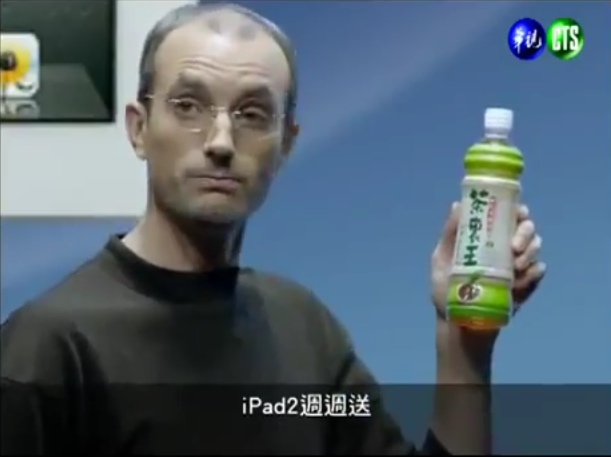
(via Cult of Mac)
- July 8: French magazine Le Point reveals that Steve almost purchased a castle in the South-East of France. Pictured below, the property is valued at around €25m ($36m). Apparently Steve’s wife, Laurene, toured the property herself.

The article also relates that back in 1985, Jean-Jacques Servan-Schreiber, a French journalist close to President Francois Mitterrand, apparently asked of the head of state a special present to Steve Jobs for his 30th birthday. I’ve read many stories about that famed birthday, where tons of celebrities attended, including Ella Fitzgerald who was the party singer. Anyway, JJSS (as he is often called) reportedly suggested that the French nationality was offered to the Apple co-founder as a special gift. The French President nonchalantly refused. I think Steve would have appreciated the gift, as he has often testified of his love of France (I have made a compilation of the many times he uses France in Apple demos).
- July 11: a new Tshirt made it to the Apple Gift shop in Cupertino… making fun of the company’s cult of secrecy. I’m buying it next time I go there! (via Macrumors).
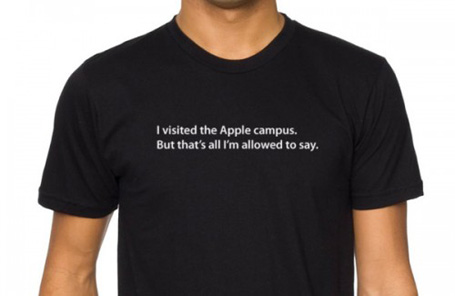
- July 21: John Gruber of Daring Fireball spotted a nice anecdote about Steve and his legendary curtesy. I am quoting the same thing he did:
The story goes that ESPN president George Bodenheimer attended the first Disney board meeting in Orlando, Florida, just after the company had bought Pixar, the innovative animation factory, and spotted Apple CEO Steve Jobs in a hallway. It seemed like a good time to introduce himself. “I am George Bodenheimer,” he said to Jobs. “I run ESPN.” Jobs just looked at him and said nothing other than “Your phone is the dumbest fucking idea I have ever heard,” then turned and walked away.
- July 21: Philip Elmer-Dewitt dug out a nice chart that compiles all the public data about Apple’s reiumbursements of the expenses of Steve’s famed private jet airplane. I think it is worth mentioning that Steve can use the jet for his personal use, but then of course the company doesn’t reiumburse him of the cost of operating it. The chart is below:

- July 23: after all the nonsense we’ve come to read about Steve’s succession lately (which did grant us a new Steve Jobs quote: “it’s hogwash”, courtesy of the Wall Street Journal) — John Gruber wrote a very good article, the kind that only he knows how to write, on the topic: On Succeeding Steve Jobs. His conclusion: “the obvious structure for a post-Jobs Apple is simply Apple as we know it, without Steve Jobs.” I believe he is 100% right and that’s what we will see, perhaps as early as next year. BUT, and it’s a big BUT, I am not sure Tim Cook can keep the fire alive as Steve did for the next decade. And as I’ve stated before, I think he will have trouble running the company unchallenged the way only the genius-founder Steve Jobs can. His authority to run the super-disciplined fruit company will probably be challenged a couple of years after Steve is gone… Time will tell.
Excerpts from an interview with Apple’s first CEO
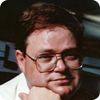 As you well know if you’ve read my Steve Jobs biography thoroughly, Steve Jobs was not CEO of Apple until January 2000. Apple’s first CEO was in fact Michael Scott, more famously known as Scotty. Scotty notoriously didn’t get along well with Steve in the early days (as most employees, to be honest), and his eventual departure of the company in 1981 gave Steve Jobs the necessary power to take over the Macintosh project.
As you well know if you’ve read my Steve Jobs biography thoroughly, Steve Jobs was not CEO of Apple until January 2000. Apple’s first CEO was in fact Michael Scott, more famously known as Scotty. Scotty notoriously didn’t get along well with Steve in the early days (as most employees, to be honest), and his eventual departure of the company in 1981 gave Steve Jobs the necessary power to take over the Macintosh project.
In a fashion that was probably launched by John Sculley, BusinessInsider published an interview of Scotty last month, which is worth a read if you are interested in Apple history and have 15 minutes to spare. The piece is honest, though pretty light on the real reasons of Mike Scott’s departure, namely the lay-offs of Black Wednesday.
For those with severe time-constraints, here are the parts that were the most interesting to me:
BI: What were your impressions on meeting [Steve Jobs and Steve Wozniak]?
MS: I never got to see the garage, I just saw it at Markkula’s place up on a hill. Jobs did the talking, and Woz was the quiet one, although more lately Woz has found his voice more. In the early days, we were all so busy, that it was well partitioned over who did what. Woz was doing circuit board itself, Jobs was handling rest of Apple II, Markkula was working on marketing, and I was working on getting us into the manufacturing and all the rest of the business parts.
BI: Was [Steve Jobs] as particular then as he is said to be now, or in the early days was he learning and acting differently?
MS: No, he was maybe more particular. The Apple II case came, it had a beige and a green, so for all the standard colors of beige available in the world, of which there are thousands, none was exactly proper for him. So we actually had to create “Apple beige” and get that registered. I stayed out of it but for weeks, maybe almost six weeks, the original Apple II case, Jobs wanted a rounded edge on it so it didn’t have a hard feel. They spent weeks and weeks arguing exactly how rounded it would be. So that attention to detail is what Steve is known for, but it also is his weakness because he pays attention to the detail of the product, but not to the people.
BI: Can you explain that? So was that your job to make sure you brought in all the right people and he wasn’t very attuned to that?
MS: I don’t know how much he’s changed being a manager, but he would not, for instance! he was never allowed to have much of a staff while he was there because he would not supervise them. He wouldn’t make sure they got their reviews on time or that they got their raises, or that they got the health they need.You have to take care of the people as well as the product. As they say he yells at people, at times you have to yell, but at times you have to be supportive too, and I would say that that’s still what makes Steve, Steve.
That was a dispute you get into — who gets number 1? One of the first things was that of course, each Steve wanted number 1. I know I didn’t give it to Jobs because I thought that would be too much. I don’t remember if it was Woz or Marrkula that got number 1, but it didn’t go to Jobs because I had enough problems anyway.
(Romain’s note: Steve Jobs actually managed to become Apple Employee Number 0)
The other argument at the meetings was would Steve take his dirty feet and sandals off the table, because he sat at one end of the conference table, and Markkula sat at the other end chain smoking. So we had to have special filters in the attic in the ceiling to keep the room filter. I had the smokers on one side and the people with dirty feet on the other.
That’s still the way it works, it’s still in the culture, you want to do things right, not just “good enough.” The alternative business model is like Microsoft, where something’s “good enough” to ship, instead of wanting it “just right.” It’s always been Apple’s goal to ship something we were proud of and something people would be proud to own, and I think that’s still true from thirty years ago.
A little side story that he and I would fight over. If we were negotiating price for parts, we could negotiate a price with a vendor and at the last minute, Steve would come in and bang on the table and demand to get one more penny off. And of course they would give him one more penny off. Then he’d crow “well I see you didn’t do as good a job as you could’ve getting the price down.” And I’m saying, “Yeah but that one more penny might’ve cost us a bit more ill will for times when parts are in short supply.”
BI: Was there tension with you being brought in as, what we call now, “adult supervision.” Did you get the sense that he wanted to be in charge of the company and resented you or anything?
MS: Steve just wants to be Steve. Steve’s never shy about telling you what he wants and where he stands. He’s very straightforward to deal with. Unlike other people that don’t tell you what they mean.
While you wait for tomorrow’s keynote…
- The New Yorker did a story on the history of the computer mouse, back to Xerox PARC and the famous Steve Jobs visit that supposedly inspired Lisa then Macintosh. One of the mouse’s inventors, Malcom Galdwell, recalls what we already know, that Apple didn’t “steal” the mouse from Xerox. Unfortunately the story can only be accessed by subscribers — I didn’t subscribe just to read it. The abstract is here (not very well done). It contains interesting old sketches and pictures of prototypes, as well as quotations from the piece, such as this one:
“I had a series of ideas that I wanted to bounce off [Jobs], and I barely got two words out of my mouth when he he said, ‘No, no, no, you’ve got to do a mouse.’ I was, like,‘What’s a mouse?’ I didn’t have a clue,” Hovey told Gladwell.
(via Cult of Mac)
- We’ve talked about it earlier: the building of the extension of Pixar’s Emeryville campus, Pixar Phase II, is now over. Check it out on the excellent Pixar blog.
- A curious piece of trivia, some study was made to prove that Apple had actually the same effect on fanboys that a religion (or, more appropriately, a cult) on its followers:
As discussed in the new BBC documentary “Secrets of the Superbrands”, when you put an Apple fanatic under an MRI and start mentioning iPhone 5s and iPad 3s, neuroscientists found that Apple tends to stimulate the same parts of the brain as religious imagery does in people of faith.
No news to me.
- And I thought I would never be able to find new keynotes… but no, two oldies came up this past month to add up to my impressive collection. I hope you guys take time to check them out, because they’re both pretty interesting.
First, an interesting one (and in high quality, too) from 1996, where Steve Jobs still spoke as CEO of NeXT Inc. — but already famed CEO of Pixar — at a Microsoft Developers Conference, about NeXT’s server technologies, WebObjects. In the video he is a late speaker, which is a testament to how unimportant he seemed to be. He is also very casual and humble, as depicted in a number of articles from that time (he was just coming out of his wilderness years). Watch the keynote here (via Daring Fireball). - The second one I just found, and on YouTube, too! it’s a casual chat Steve Jobs had with then-struggling Mac developers at the end of the 1997 WWDC! Definitely worth a look if you’re interested in Steve Jobs history. Again, it is a testament to Steve’s unchanging character and principles. He stands by the same rules now as he did then, including the most important one: building great products. He also mentions something I knew from a 1999 interview, quoted below:
About 10 years ago I put in a T1 to my house. I’m actually getting ready to put a 45 mg fiber to my house, because I want to find out what that will be like, because everybody’s going to have that someday. But I have a pretty sophisticated setup; whether I’m at Apple or at Pixar or at my home, I log in and my whole world shows up on any of those computers. It’s all kept on a server. So I carry none of it with me, but wherever I am, my complete world shows up, all my files. Everything. And I have high speed access to all of it. So my office is at home too. And when I’m not in meetings, my work is fundamentally on email.
in the aforementioned video, we discover Steve’s been working in such an environment since 1990. This is thanks to NeXT’s very advanced ‘inter-personal computing’ (i.e. networking) technology. So basically Steve’s been living ‘in the cloud’ for over 20 years, while we mere mortals will probably find out what it’s like thanks to a product that he will introduce (if rumors are to be verified) tomorrow. The advancement of NeXT’s technology still continues to amaze me.
- Business Insider has published a thorough interview of Apple’s first CEO, Mike Scott. Honestly I haven’t had time to read it yet, so I wo’nt comment on it, but you can be sure I will pretty soon. (via TUAW) Same goes for the Fortune article Inside Apple, which I finally got my hands on last week, but haven’t yet had time to write about.
- Conan O’Brien dressed as the iLeader in a baroque fresco by Fast Company: (more…)
The Book of Jobs, version 3.0
Most of you have probably heard the news already, but it’s too important for me not to leave any trace of it on the blog.
The rumors surrounding Steve Jobs’ authorized biography have been confirmed. The book exists indeed, written by Walter Isaacson, and will be published by Simon & Schuster early next year. I will be called (hold your breath): iSteve: The Book of Jobs. The news broke out thanks to Philip Elmer-DeWitt, who writes the Apple column of Fortune.com. PED makes an interesting portrait of the writer in his column. Apparently the idea was his, and he had enough nerve and talent to seduce Steve into writing his biography.
I am, as I imagine you are, incredibly excited by the coming of this book.
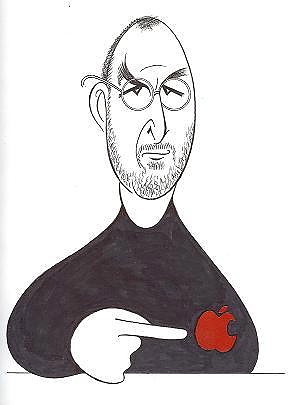 The biggest news is of course that the book is ‘authorized’, meaning Steve, as opposed to previous biographies, helped its making instead of blocking it. What usually happens is that whenever a journalist or writer tries to interview someone from Steve’s entourage, he faces a wall of silence, akin to an omerta. Indeed, they should be wary of what they say, because historically Steve has shown some pretty harsh un-forgiveness with indiscreet friends and relatives.
The biggest news is of course that the book is ‘authorized’, meaning Steve, as opposed to previous biographies, helped its making instead of blocking it. What usually happens is that whenever a journalist or writer tries to interview someone from Steve’s entourage, he faces a wall of silence, akin to an omerta. Indeed, they should be wary of what they say, because historically Steve has shown some pretty harsh un-forgiveness with indiscreet friends and relatives.
The most famous example of this trait is Michael Moritz’s 1982 piece, The Updated Book Of Jobs, which he wrote as Time Magazine’s Silicon Valley correspondent (Moritz later wrote the first good book on Apple, and arguably the first Steve Jobs biography, The Little Kingdom). Moritz had been given carte blanche at Apple to write the portrait of Steve Jobs who was a serious candidate to become Man of the Year 1983. Instead, he turned out this much more critical piece, including a testimonial from Steve’s college friend Dan Kottke: “something is happening to Steve that’s sad and not pretty, something related to money and power and loneliness. He’s less sensitive to people’s feelings. He runs over them, snowballs them”. Steve apparently broke all ties with Dan after that article was published.
But this time, Steve is said to give biographist Isaacson acces to his closest friends and relatives. I imagine among the friends there will be Larry Ellison, Bill Campbell, Bob Metcalfe, perhaps Al Gore. I am curious about Steve’s relatives. Will Laurene speak up on her husband? I’ve never found any trace of her speaking of Steve in public. Or perhaps his biological sister Mona? That’s more likely.
The active collaboration of Steve will have of course positive as well as negative effects. So far, previous biographies (such as my personal favorite, Alan Deutschman’s The Second Coming of Steve Jobs) only could be based on interviews of ghosts from Steve’s past life (I’m referring to you, Dan Kottke and Andy Hertzfeld), or of pissed off former employees who had regained their ‘freedom of speech’. This is nicely put by Chris Smith in an article I will refer to below:
In recent years, several biographers have gamely tried to chart the depths of Jobsʼ psyche, with little help from the man himself. He rarely speaks to the press, save for tightly scripted sound bites, so all these accounts are based on talks with old colleagues and Apple Deep Throats, supplemented by occasional in-depth interviews heʼs granted to a few lucky reporters over the years.
Any journalist who’s tried to go a little deeper had to endure Steve’s legendary wrath, as described by Rich Karlgaard in his 2006 WSJ article Vladimir llyich Jobs? (for the heck of me I can’t find a link to it, but I have a scanned version on my Mac): (more…)


